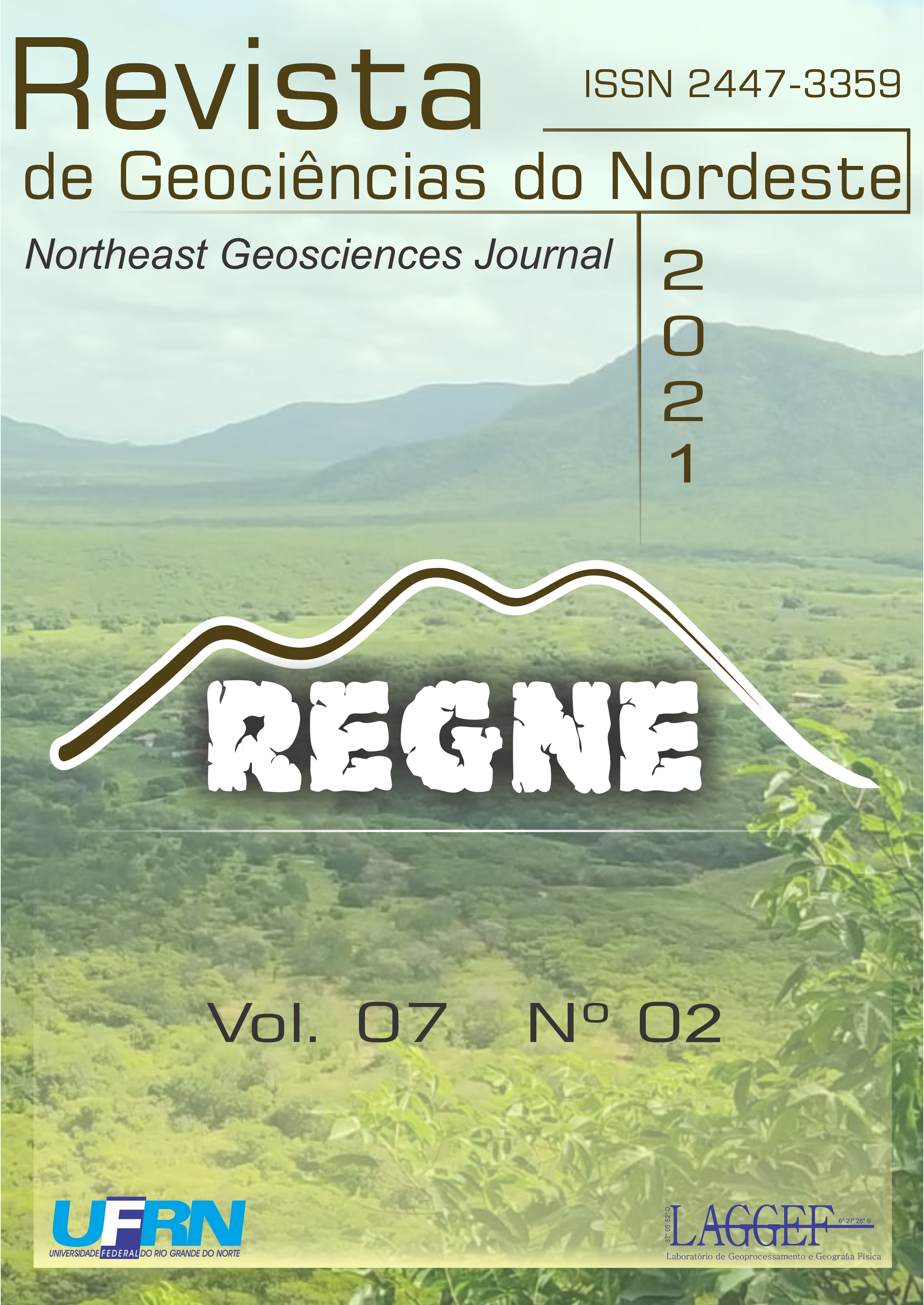Análise prospectiva de corpos máficos-ultramáficos através de aerogeofísica: caso de estudo do vale do Jacurici/Bahia
DOI:
https://doi.org/10.21680/2447-3359.2021v7n2ID23952Resumo
Os corpos ígneos do Vale Jacurici hospedam o maior depósito de Cromo do Brasil. Esse depósito é caracterizado pela presença de uma camada maciça de minério que ocorrem em diversos corpos, segmentos de um possível corpo único fragmentado. O presente trabalho analisa as características desses corpos através de técnicas de sensoriamento remoto e levantamentos aerogeofísicos, descrevendo as respostas geofísicas e de relevo dos alvos econômicos. A área de estudo apresenta anomalias magnéticas quando utilizando-se filtros de 1ª derivada e tilt derivativo do campo magnético total, ao passo que razões eU/K e eTh/K definem as melhores delimitações dos corpos ígneos utilizando o método gamaespectrométrico. As informações apresentadas servem como parâmetro prospectivo na descoberta de novos corpos laterais a fim prover guia para a descoberta e análise de depósitos similares pelo Brasil.


 Português (Brasil)
Português (Brasil) English
English








